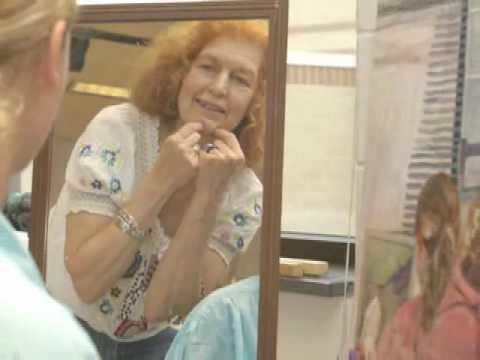Name Audrey Ushenko | ||
 | ||
Audrey Ushenko (born in 1945) is an American realist figurative painter. She was born in Princeton, New Jersey, and has a daughter named Emily. She currently lives in Fort Wayne, Indiana where she is a faculty member at Indiana University-Purdue University Fort Wayne. At this university she teaches figure drawing, advanced painting, and advanced art history classes. Audrey Ushenko received her B.A. in English literature (1965) from Indiana University, a painting certification from the Art Institute of Chicago (1964), an M.A. in painting from Northwestern University (1967), and a doctoral degree in art history from Northwestern University (1978). Her background in English literature has allowed her to explore this particular territory in her art. She has had 22 solo shows, participates in many group exhibitions including numerous shows at the National Academy of Design, and has received numerous distinctions and awards.
Motif
Greek mythology, seventeenth and eighteenth century images, English literature, and everyday social interactions. Her preferred medium is oil painting although she also excels in drawing and watercolor. Ushenko has been praised for her keen attention to detail and brushstroke, both of which enhance her images by bringing to life the figures and settings on her canvases. She manipulates light and shadow, which lends her work an impressionist style and she incorporates both warm and dark hues. Her use of color makes the work appear light and quirky at first, but as the viewer studies her paintings a darker edge of sadness makes itself known. Ushenko uses contrasts of color and texture to convey works so vivid they elicit thoughts of fantasy, while simultaneously retaining a crisp reality in her oil paintings. Reviewer Gerrit Henry proclaimed Ushenko “a master chronicler of realities small and large,” and she enlivens even inanimate objects. Ushenko sometimes uses herself as a model, as do many artists; she likewise claims that this is mostly out of convenience, not autobiography.
She has also painted figural groups, often in their authentic surroundings, but with a twist. In them, Ushenko explores the nature of social interaction through her relationship to the natural and constructed worlds, but also by questioning their relationships. Her oil paintings pay homage to humans as observers and allow viewers to witness the many nuances of everyday sights; then, Ushenko’s work can seem to be unpredictable. In particular, she is known for “juxtaposing people, creatures and objects that you may not expect to be nearby or you would not have noticed otherwise.” She routinely paints the same model in related positions, although they often contrast; for example, one model may be portrayed in shade and the other in full sunlight, which subtly reveals a sense of duality and dichotomy. In many of Ushenko’s paintings, something appears to have just happened or is just about to occur.
While Audrey Ushenko often makes ordinary events appear extraordinary, some works are less celebratory. This occurs in the process of painting because the meanings of a work develops as she paints, rather than being determined from the outset. In Vanitas VIII for example, there appear to be five images of Ushenko in one room. This seems to be a comment on the multiple faces that each person has and displays, often in a single day. In her painting at the Duchossois Center for Advanced Medicine at the University of Chicago Hospitals, she was so inspired by the “magnitude of the ongoing human drama being quietly played out day after day” in the hospital that she wanted to create a work to display it. Patients and staff were able to watch Ushenko paint and many were incorporated into the three-story monument.
In Perseus and Medusa II she accurately depicts this ancient myth. In this myth, Perseus was sent by King Polydectes to bring him the head of Medusa in order to remove Perseus from his mother Danae’s side so the king could make her his wife. This mission was particularly dangerous because anyone who looked into Medusa’s face was said to turn to stone. Medusa was one of three sisters but she was the only mortal one. The sisters were originally gorgeous maidens but because of Poseidon’s profound obsession with her, to which she did not return the feelings, he turned her and her sisters into monsters with live snakes covering their heads instead of hair. Perseus, with the help of Athena and Hermes, used his mirrored shield to see Medusa’s reflection without being turned to stone and therefore successfully cut off her head. This oil painting very clearly shows Perseus holding Medusa’s newly removed head before returning it to the king. Ushenko does an excellent job with giving a very lifelike demonstration of Perseus and Medusa, and the face of Medusa can be recognized as Ushenko’s very own. This work is part of Rowan University’s (Glassboro, New Jersey) collection.
While Ushenko is known for her figural paintings, she is also quite proficient at landscapes. In Windy Autumn she allows a little bit of an inside look at her own home. This painting was done from the rooftop of her house, overlooking her street where the viewer can see her car parked in the driveway. She instills beauty into such an ordinary sight by capturing all of the nuances of the color-changing treetops and surrounding homes. This neighborhood appears cozy yet very much alive considering the well-kept lawns and helicopters in the sky. Ushenko is still able to convey a sense of vivacity in her art even without figures in her paintings.
